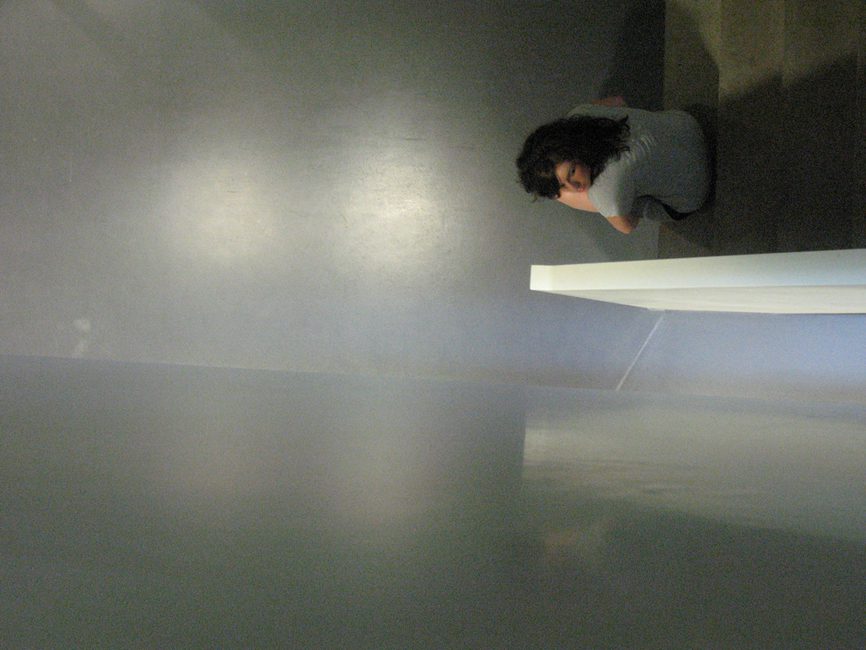
The first experience of color and light
“Color is different,” says a person born blind after successfully restoring his sight through eye surgery. After opening his eyes, which are now sensitive to stimuli for the first time, he experiences a completely new sensation of the way he exists in the environment, in which a completely new source of meaningful experiences suddenly opens up alongside the sensory media (lat. medium – mediator) with which he is already familiar. The intensity of the perceived radiation, on the other hand, is experienced as light that flows into him through his now functional eyes, enveloping his body like warmth and causing it to vibrate with a multitude of colored tones.
Color and light as a phenomenon
While the perceived color and light structure initially still has a purely phenomenal character for the formerly blind person and refers exclusively to himself, the character of the sign only develops from the process of multisensory confrontation with the environment. The term phenomenon (Latin phaenomenon – appearance, appearance in the air, Greek phainein – to make visible, to make seen) characterizes the process of “making visible”, of “becoming visible”, of “showing oneself” of meanings via the visual relationship between man and his environment. Only then do colors and brightness begin to refer to smells, sounds, materials and movements for the viewer, from which the memory representation of the visual space subsequently develops, which can therefore also be described as a language and cognitive system analogous to its function as a reference system for the use of signs and the meaning of signs.
The loss of color and light
The blind person, on the other hand, goes into the darkness and feels the loss of the sensory media of color and light, through which he could enter into a process of communication with the environment, whereas the memory of the color and light structure of his visual space is still represented in his memory. Color and light are therefore not accidentals of the environment, but sensory perceptions of the human being, who can store the meanings experienced with them from the multisensory experience of the natural and sociocultural environment in memory and also retrieve them again. M. Hull, who is blind, describes this profound change in his existence as follows: “As you go deeper and deeper into blindness, the things you once took for granted and which, when they disappeared, you initially mourned and for which you later tried to find all sorts of compensations, end up becoming meaningless. Somehow it no longer seems important what people look like or what cities look like. You start to live with other interests, other values. You start to live in a different world.”
Color and light as information media
In addition, like all sensory perceptions, color and light fulfill a medial function, as they inform people about environmental conditions. Just as he can adapt his body temperature to the environmental conditions through the sensations of heat and cold, he can do the same by adapting the tension conditions in his muscle and joint system to the conditions of gravity, whereas the sensations of color and light allow him to adapt his entire existence to the conditions of his environment. The adaptation of humans to the spatial-visual conditions of the environment goes further than that of all other living beings, which also use environmental radiation for their orientation and action processes and, to some extent, for their species-specific communication processes. The entire spatial-visual culture of mankind shows the result of this intergenerational and global adaptation process, without which cities, infrastructures, societies, technology, science and design would not exist in their current form. Color and light therefore function as media for the process of cognition, understanding, problem solving and mediation, the messages of which are reflected in the socio-cultural environment of the human being and in the level of competence development of each individual.
Color and light as communication media
The sensory perceptions of color and light are not only passively experienced by humans, as by many other species, but are actively used for the spatial-visual communication process. It has long been known that color adaptation to the environmental conditions of a species-specific habitat or the adoption of a deterrent camouflage can protect a species from enemies, but new scientific studies show that animals also use the media of color and light for behavior control and the exchange of information. The communication process is particularly striking for the human observer in the chameleon, which can perfectly adapt its body color to the changing color and light structure of its environment. However, the highest degree of change is not seen in the adaptation of the body color to the background, but in the communication with conspecifics. A chameleon is able to send differentiated messages to its conspecifics by changing its body color in order to communicate its intentions. These range from a willingness to fight, to submission, to an interest in mating. In addition, the color changes not only announce his behavioral states and intentions for action, but also show his responses to messages he has already received. For example, the skin color of a chameleon can be used to determine whether an invitation to mate was successful or met with rejection. To avoid attracting the attention of enemies, the exchange of messages takes place at such short intervals that it is often not even visible to other species, which is why this ability was only recently discovered by humans. (Devi Stuart-Fox and Adnan Moussalli) This example also illustrates the link between the perceived physical state and the animal’s experience and behavior, which is not fundamentally different in humans, but has merely taken on more complex forms. People also communicate their emotional states of behavior and intentions for action directly to their environment via the color change of their skin, although most communication partners are usually only aware of this unconsciously. Depending on the context of the situation, the redness of his face indicates specific states of excitement that can signal feelings such as shame, anger, desire, combativeness, interest or rejection to those around him. The unconsciously conveyed message of an emotionally conditioned physical state cannot simply be suppressed or manipulated, which is why it is also of great importance with regard to the credibility of a verbal statement.
The multisensory experience of color and light
The familiar color of all the significant entities in the environment is represented in the color and light structure of the visual space together with all other content from the multisensory engagement with the environment, which influences a person’s expectations to such an extent that they can even see them when they are no longer actually present. In one experiment, test subjects were asked to use a control to decolorize computer images of familiar fruits, such as bananas or lettuce, until only greyscale gradients were visible. However, all results showed shifts in the complementary color range, which is why the bananas showed a bluish tint and the lettuce a reddish one. The presentation of the fruit in an actual grayscale range, on the other hand, still appeared colorful to the test subjects, which indicates that the colors familiar from use are generated by the brain, since the test subjects were able to decolorize geometric objects without any problems. (Hansen T., Gegenfurtner, K.)
Memory colors or color expectations
In the field of neuroscience, we also speak of “memory colors”, which applies equally to the other formal properties of the color and light structure, such as brightness, shapes and movements. The “memory colors” or color expectations in turn form the basis for “color constancy”. The brain compares the proportional changes in the colorfulness of known objects with the lighting conditions of the environment and corrects the “actual” colors according to expectations. In this way, people can distinguish whether the change in color comes from the object itself or from the ambient light. The semantic interpretation of the color and light structure of the visual space is focused on the meaningful content, which is why the influence of ambient light on the surrounding situation is usually ignored, while the changes emanating from the objects, such as small changes in the facial color of a conversation partner, are noticed.


